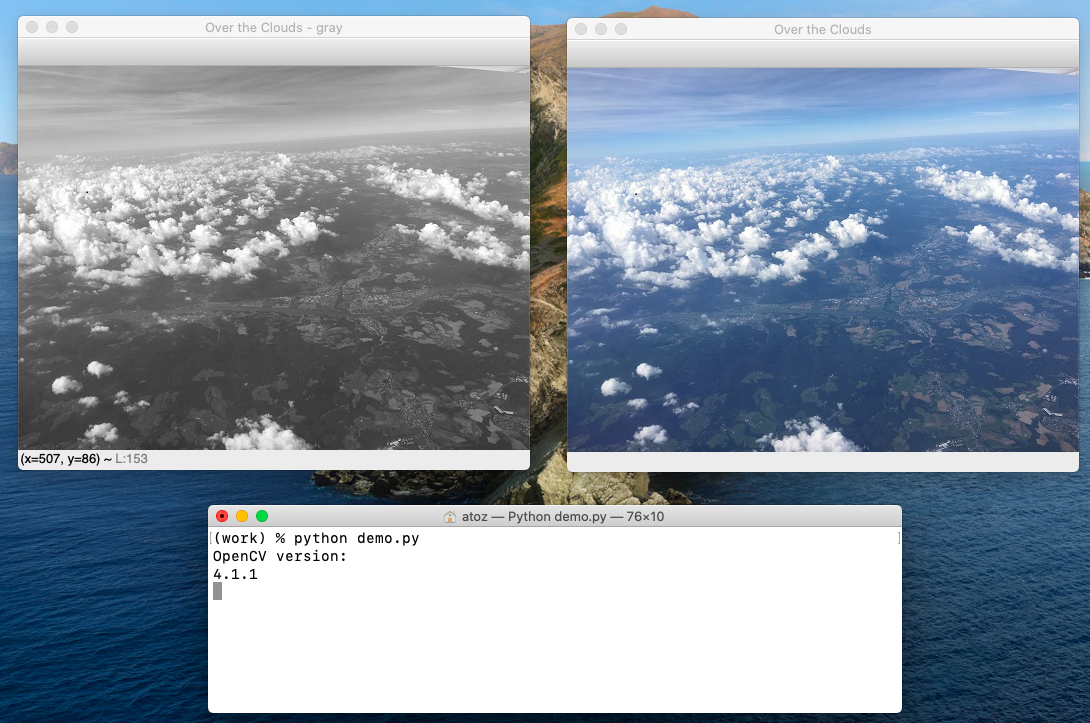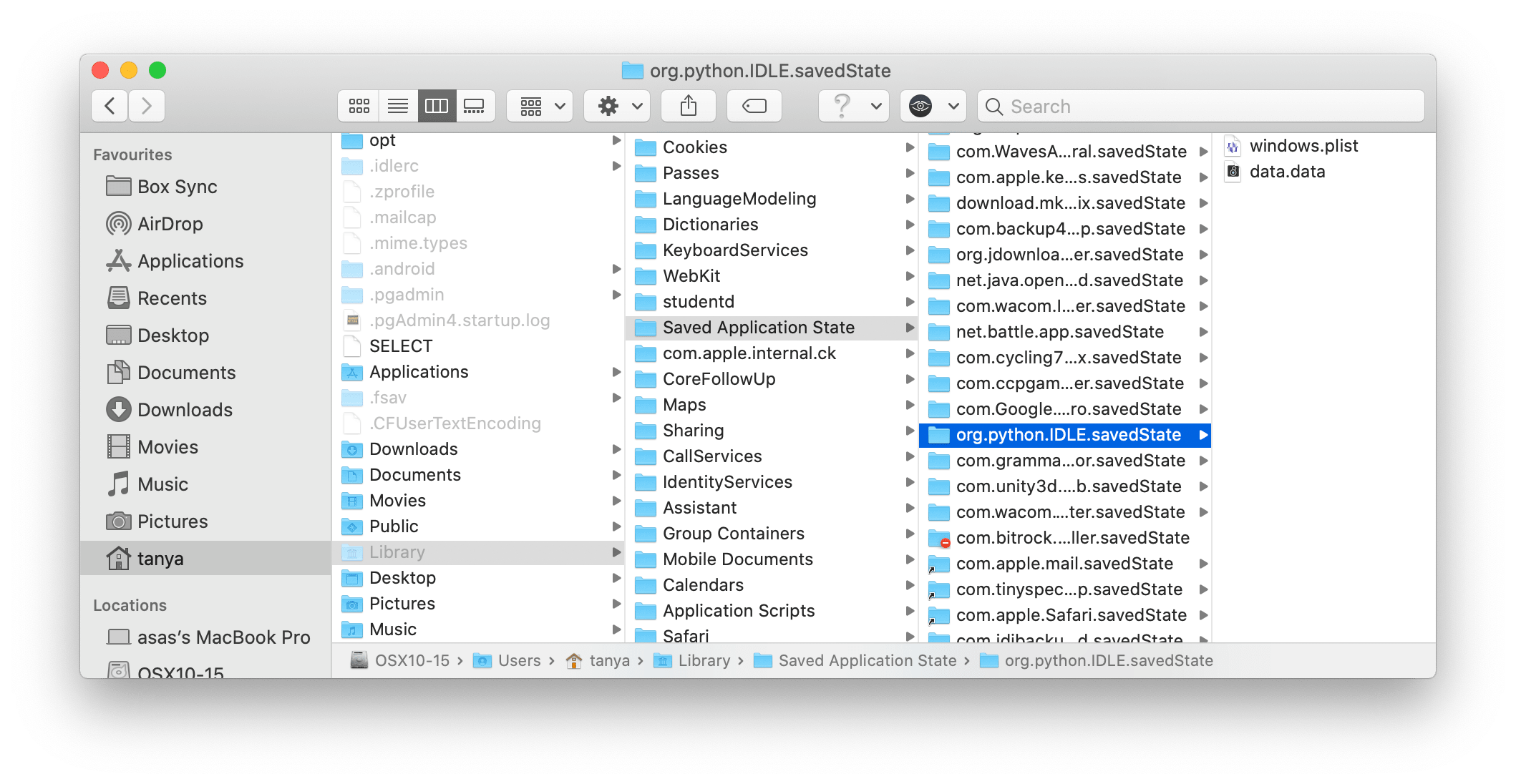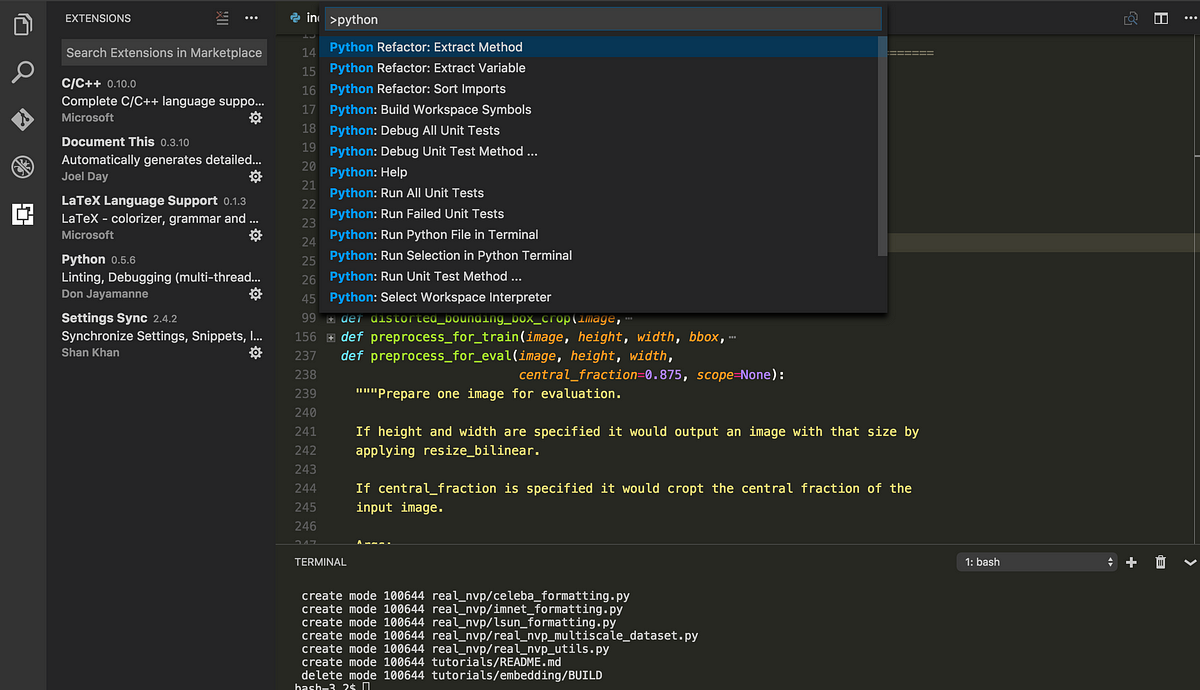I'm trying to install Python 3 in macOS Catalina (10.15.3 (19D76)) using homebrew but it is giving the below error: dmanna-a01:operations dmanna$ brew install python3 > Downloading https://ho. If you installed the latest version of python. Then you should be able to access both python and pip with: python3. Pip3 This is because on Mac you get python 2 included by default. So when you install Python 3, it doesn't overwrite your existing installation.
In this chapter, you learn how to install Python on MacOS, Windows, and Linux. We will look at multiple installation methods per platform and discuss what I think is the best option to choose from.
Most of the time, it’s not advisable to use the official installer from the python.org website. Instead, it’s better to go for the version packaged by your operating system. The advantage of OS supplied version, is that you’ll get automatic updates.
Install Python on Windows
There are three methods you can choose from on Windows.
Using The Microsoft Store
Microsoft hosts a community release of Python 3 in the Microsoft Store. This is the recommended way to install Python on Windows because it handles updates automatically and can be uninstalled easily too.
To use this method:
Install Python 2.7 Mac Catalina
- Pick the newest version and install it
With the official installer
You can download a Python installer from the official Python download website too. This method does not give you automatic updates, and I would recommend it only if you don’t have access to the Microsoft store.
Install Python On Mac Catalina Operating System
Inside WSL
If you’re familiar with Windows Subsystem For Linux, you may want to consider that option too. It’s what I use myself, and I’m truly loving it. It offers me the advantages that Windows has to offer (mainly great hardware support), while still enjoying Linux which is, in my opinion, the best platform for Python development.
To install in WSL, you’ll first need to install WSL itself. Go for WSL2 if you can. It’s much better. After that, simply follow the Linux installation instructions below!
Installation on MacOS
On most versions of MacOS before Catalina, a distribution of Python is already included. Unfortunately, it’s almost certainly an old version, Python 2.7. Luckily, there are two ways to install Python 3 on a Mac with ease.
Homebrew
First and foremost, I recommend looking into Homebrew. It allows you to install almost anything easily. The added benefit is that it’s also easy to upgrade to newer versions later on.
Once you are up and running with homebrew, installing Python on MacOS is as easy as:
Official installer
Alternatively, you can download an installer from the Python download website. The downside to this approach is that you won’t get automatic updates.

Install Python on Linux
There are several ways to install Python on Linux, that is, if you need to install it at all!
Check what’s installed first
Most Linux distributions include Python. Many will include both Python 2 and Python 3.
If you enter python --version on the command line, you’ll see the version number. It’s probably version 2.7:

You don’t want Python 2, but some OS’es still ship with it, unfortunately.
Now try python3 --version. If you get a “command not found,” you need to install Python 3. If your output looks similar to this, you’re in luck:
Using a package manager
Depending on the distribution of Linux you are running, you can install Python with the default package manager: Yum, APT, etcetera. You’ll need to find out for your specific Linux distribution which package manager is used and how to use it.
If you’re on Ubuntu, Linux Mint, or Debian, you can install using apt:
Homebrew
Another interesting option for Linux is using Homebrew. That’s right, the package manager for Macs also works on Linux.
The major advantages of using Homebrew:
- You’ll get the latest version of Python, instead of the version your OS shipped with
- You don’t need root access to your system. All the software installed with Homebrew is installed in your home directory
I find myself using Homebrew more and more while working under Linux — give it a try!
Python in your browser
If you don’t feel like installing Python, or you are unable to install it for whatever reason, I’ll offer an alternative too: you can use Python right from your browser; no installation necessary!
Bob Savage <bobsavage@mac.com>
Python on a Macintosh running Mac OS X is in principle very similar to Python onany other Unix platform, but there are a number of additional features such asthe IDE and the Package Manager that are worth pointing out.
4.1. Getting and Installing MacPython¶
Mac OS X 10.8 comes with Python 2.7 pre-installed by Apple. If you wish, youare invited to install the most recent version of Python 3 from the Pythonwebsite (https://www.python.org). A current “universal binary” build of Python,which runs natively on the Mac’s new Intel and legacy PPC CPU’s, is availablethere.
What you get after installing is a number of things:
A
Python3.9folder in yourApplicationsfolder. In hereyou find IDLE, the development environment that is a standard part of officialPython distributions; and PythonLauncher, which handles double-clicking Pythonscripts from the Finder.A framework
/Library/Frameworks/Python.framework, which includes thePython executable and libraries. The installer adds this location to your shellpath. To uninstall MacPython, you can simply remove these three things. Asymlink to the Python executable is placed in /usr/local/bin/.

The Apple-provided build of Python is installed in/System/Library/Frameworks/Python.framework and /usr/bin/python,respectively. You should never modify or delete these, as they areApple-controlled and are used by Apple- or third-party software. Remember thatif you choose to install a newer Python version from python.org, you will havetwo different but functional Python installations on your computer, so it willbe important that your paths and usages are consistent with what you want to do.
IDLE includes a help menu that allows you to access Python documentation. If youare completely new to Python you should start reading the tutorial introductionin that document.
If you are familiar with Python on other Unix platforms you should read thesection on running Python scripts from the Unix shell.
4.1.1. How to run a Python script¶
Your best way to get started with Python on Mac OS X is through the IDLEintegrated development environment, see section The IDE and use the Help menuwhen the IDE is running.
If you want to run Python scripts from the Terminal window command line or fromthe Finder you first need an editor to create your script. Mac OS X comes with anumber of standard Unix command line editors, vim andemacs among them. If you want a more Mac-like editor,BBEdit or TextWrangler from Bare Bones Software (seehttp://www.barebones.com/products/bbedit/index.html) are good choices, as isTextMate (see https://macromates.com/). Other editors includeGvim (http://macvim-dev.github.io/macvim/) and Aquamacs(http://aquamacs.org/).
To run your script from the Terminal window you must make sure that/usr/local/bin is in your shell search path.
To run your script from the Finder you have two options:
Drag it to PythonLauncher
Select PythonLauncher as the default application to open yourscript (or any .py script) through the finder Info window and double-click it.PythonLauncher has various preferences to control how your script islaunched. Option-dragging allows you to change these for one invocation, or useits Preferences menu to change things globally.
4.1.2. Running scripts with a GUI¶
With older versions of Python, there is one Mac OS X quirk that you need to beaware of: programs that talk to the Aqua window manager (in other words,anything that has a GUI) need to be run in a special way. Use pythonwinstead of python to start such scripts.
With Python 3.9, you can use either python or pythonw.
4.1.3. Configuration¶
Python on OS X honors all standard Unix environment variables such asPYTHONPATH, but setting these variables for programs started from theFinder is non-standard as the Finder does not read your .profile or.cshrc at startup. You need to create a file~/.MacOSX/environment.plist. See Apple’s Technical Document QA1067 fordetails.
For more information on installation Python packages in MacPython, see sectionInstalling Additional Python Packages.
4.2. The IDE¶
MacPython ships with the standard IDLE development environment. A goodintroduction to using IDLE can be found athttp://www.hashcollision.org/hkn/python/idle_intro/index.html.
4.3. Installing Additional Python Packages¶
There are several methods to install additional Python packages:
Packages can be installed via the standard Python distutils mode (
pythonsetup.pyinstall).Many packages can also be installed via the setuptools extensionor pip wrapper, see https://pip.pypa.io/.
4.4. GUI Programming on the Mac¶
There are several options for building GUI applications on the Mac with Python.
PyObjC is a Python binding to Apple’s Objective-C/Cocoa framework, which isthe foundation of most modern Mac development. Information on PyObjC isavailable from https://pypi.org/project/pyobjc/.
The standard Python GUI toolkit is tkinter, based on the cross-platformTk toolkit (https://www.tcl.tk). An Aqua-native version of Tk is bundled with OSX by Apple, and the latest version can be downloaded and installed fromhttps://www.activestate.com; it can also be built from source.
wxPython is another popular cross-platform GUI toolkit that runs natively onMac OS X. Packages and documentation are available from https://www.wxpython.org.
PyQt is another popular cross-platform GUI toolkit that runs natively on MacOS X. More information can be found athttps://riverbankcomputing.com/software/pyqt/intro.
4.5. Distributing Python Applications on the Mac¶
The standard tool for deploying standalone Python applications on the Mac ispy2app. More information on installing and using py2app can be foundat http://undefined.org/python/#py2app.
4.6. Other Resources¶
The MacPython mailing list is an excellent support resource for Python users anddevelopers on the Mac:

Another useful resource is the MacPython wiki: